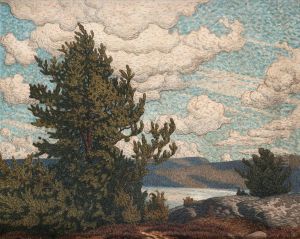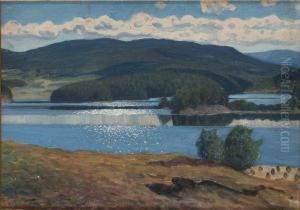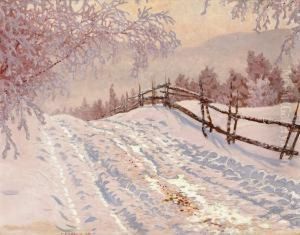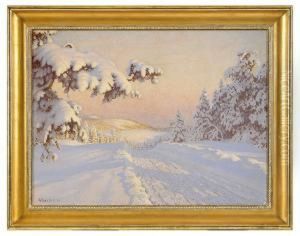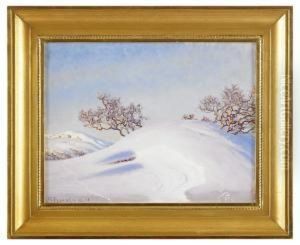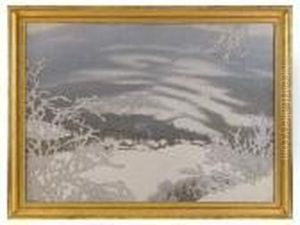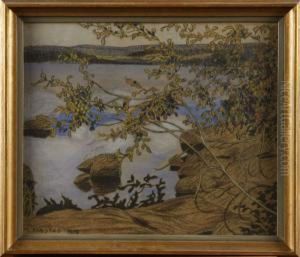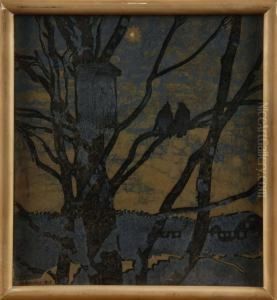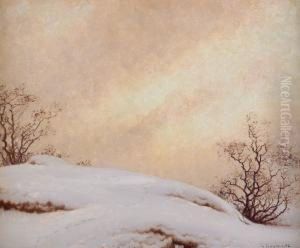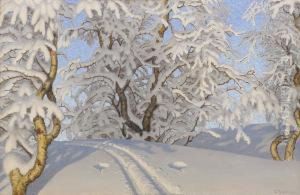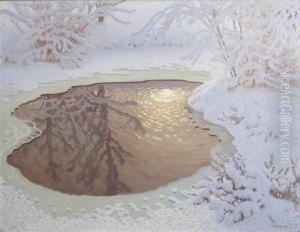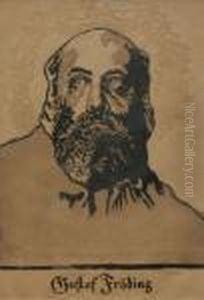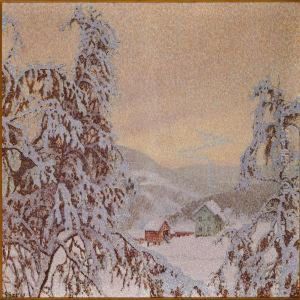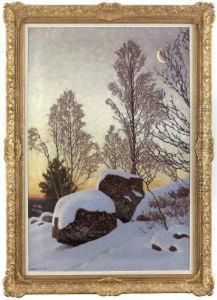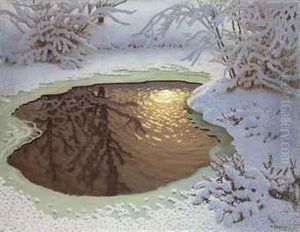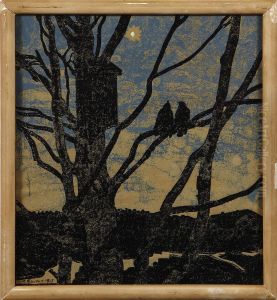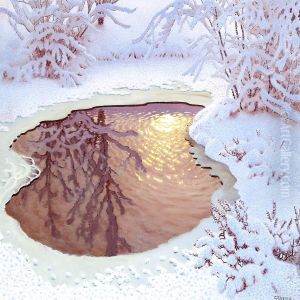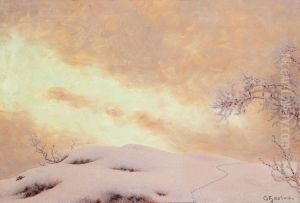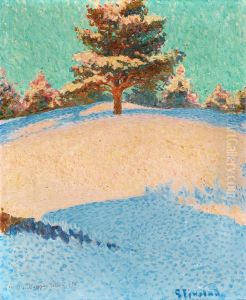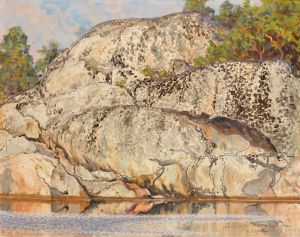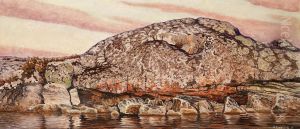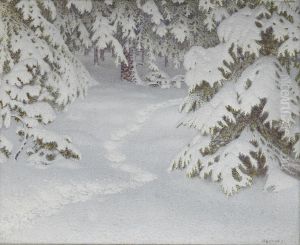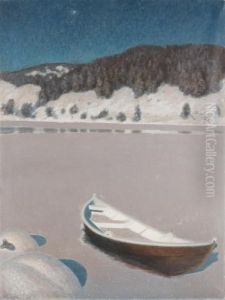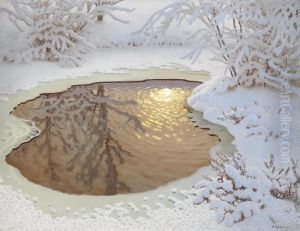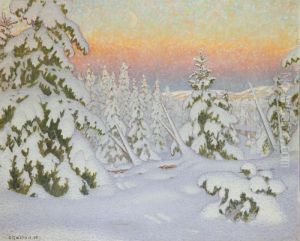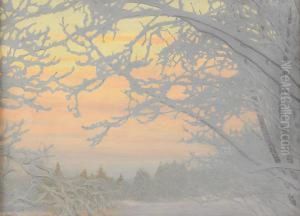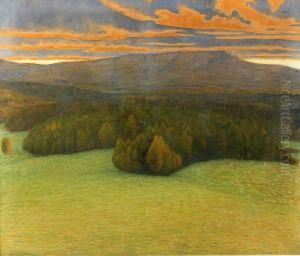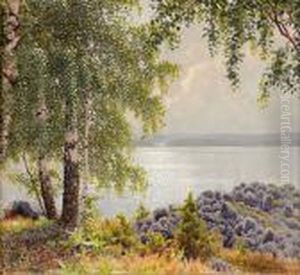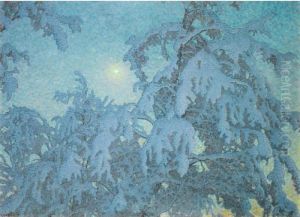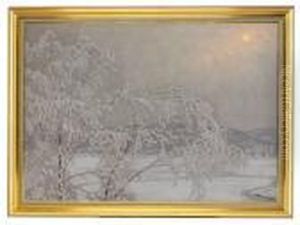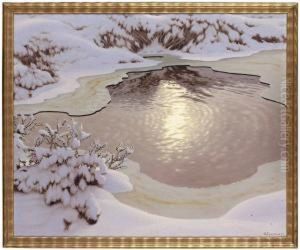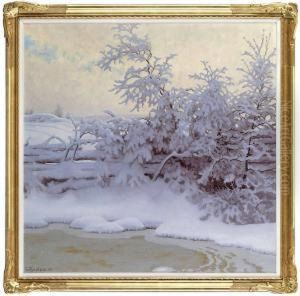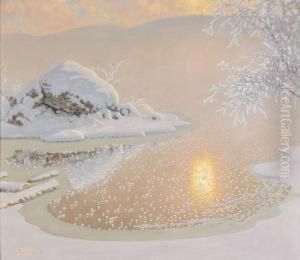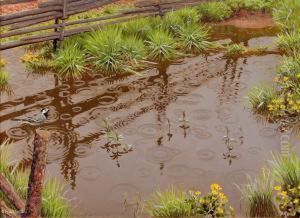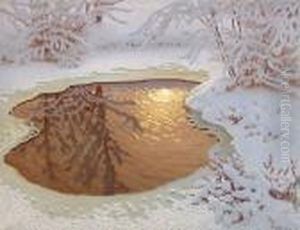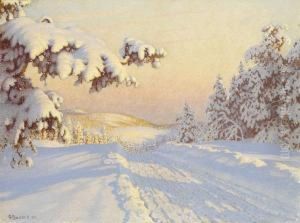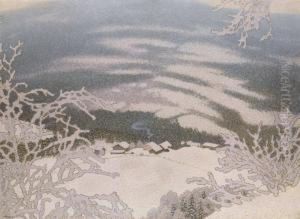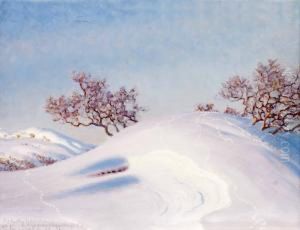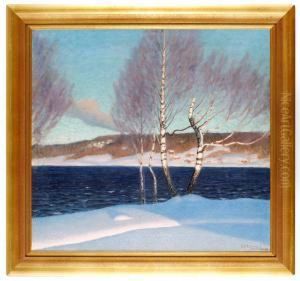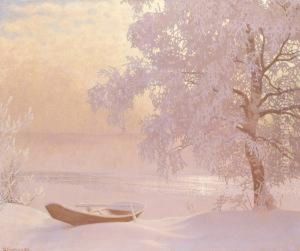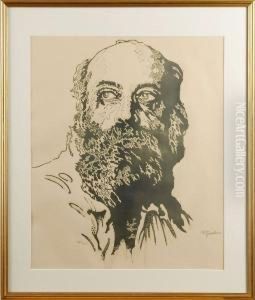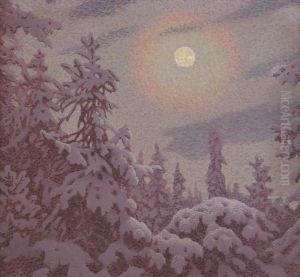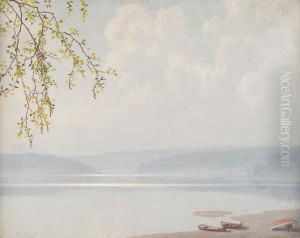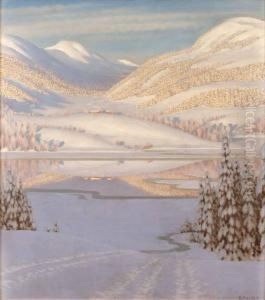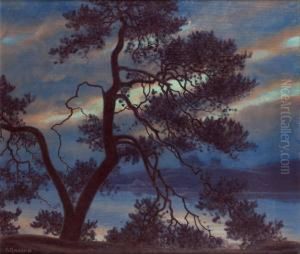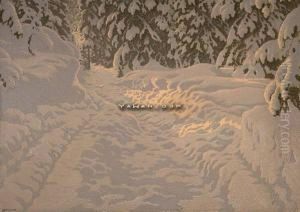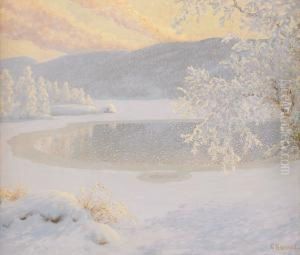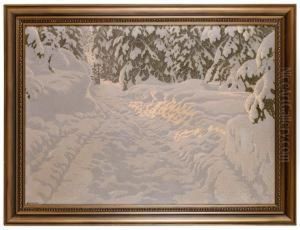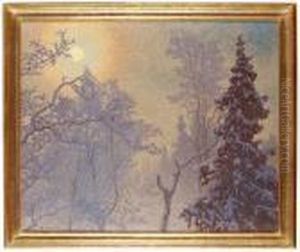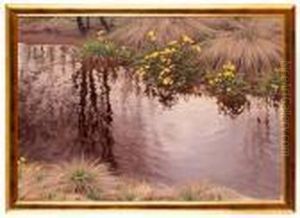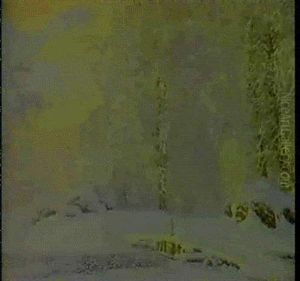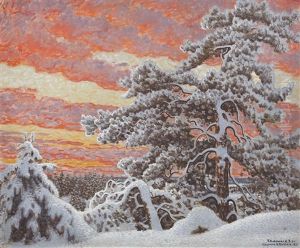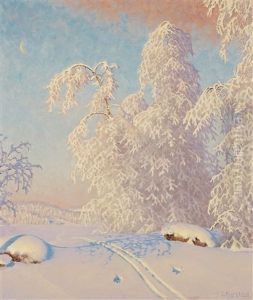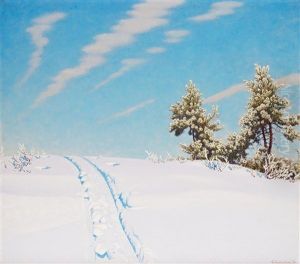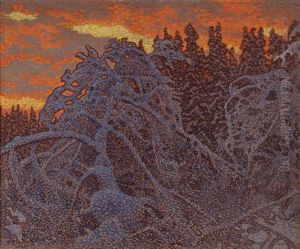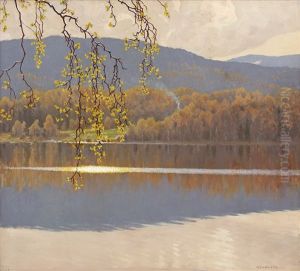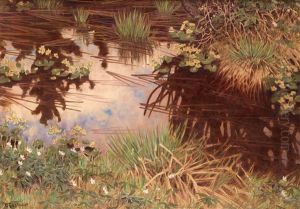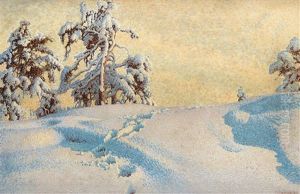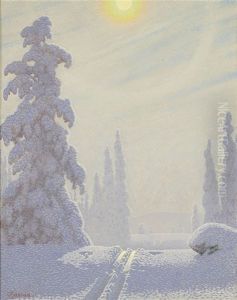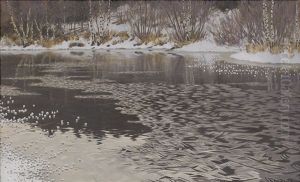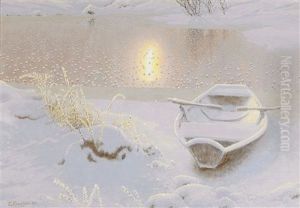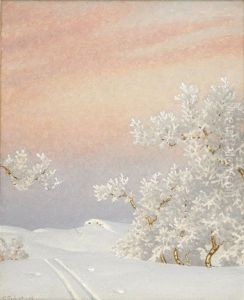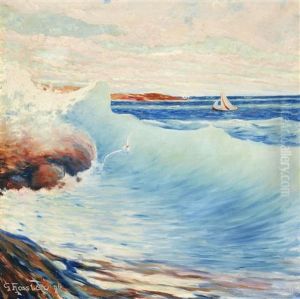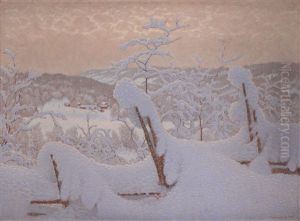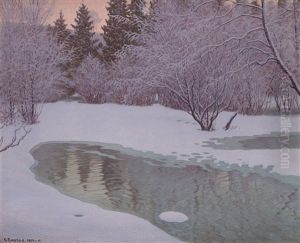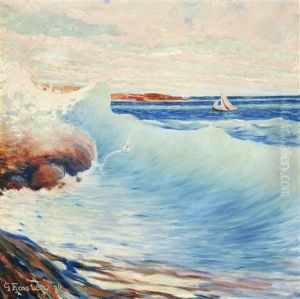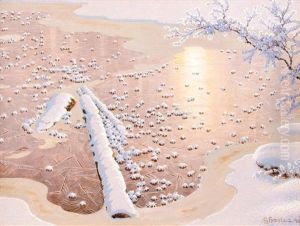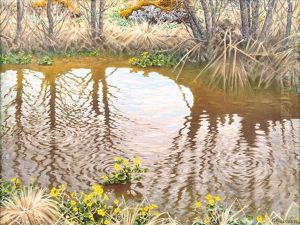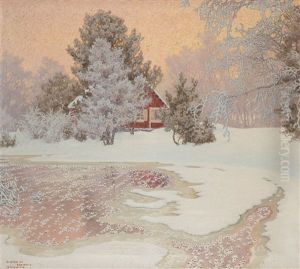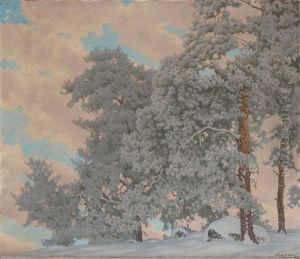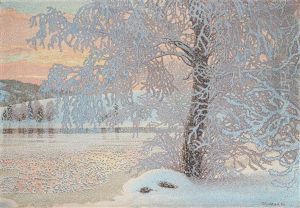Gustaf Fjaestad Paintings
Gustaf Fjaestad, born December 22, 1868, in Mariestad, Sweden, was a renowned Swedish painter, graphic artist, and designer. Known for his winter landscapes and nature motifs, Fjaestad was a prominent figure in the Arts and Crafts movement in Sweden, often referred to as the 'snow painter' due to his evocative depictions of the Scandinavian winter.
Fjaestad began his artistic journey at the Technical School in Stockholm, followed by studies at the Royal Swedish Academy of Fine Arts. He was greatly influenced by the National Romantic style, but his work eventually evolved to reflect the aesthetic of Art Nouveau. Fjaestad married the textile artist Maja Hallén in 1898, and they became central figures in the artist colony at Rackstad near Arvika.
In his work, Fjaestad experimented with woodblock printing and developed a unique technique for printing large-scale woodcuts that gave his prints a distinctive textured appearance, reminiscent of tapestries. This method contributed significantly to his fame, and his prints were exhibited widely, including at the 1900 Paris Exposition where he received recognition.
His paintings, characterized by their luminous and atmospheric qualities, often featured snowy landscapes of the Värmland region. He was particularly adept at capturing the play of light and shadow on snow, using a palette that conveyed the cold, crisp atmosphere of the Nordic winter.
Apart from his artistic endeavors, Fjaestad also designed furniture and interiors, contributing to the broader scope of the Arts and Crafts movement in Sweden. His designs often incorporated natural motifs and displayed the same attention to detail and texture that could be seen in his prints and paintings.
Throughout his career, Gustaf Fjaestad exhibited extensively both in Sweden and abroad. He was a member of the Royal Academy of Arts and received numerous awards for his contributions to Swedish art. His works are part of several museum collections, including the Nationalmuseum in Stockholm.
Fjaestad's legacy is not only found in his prolific output but also in his influence on the development of Swedish visual arts in the early 20th century. He passed away on July 17, 1948, leaving behind a body of work that continues to be celebrated for its unique vision of the natural world and its influence on Swedish artistic heritage.
